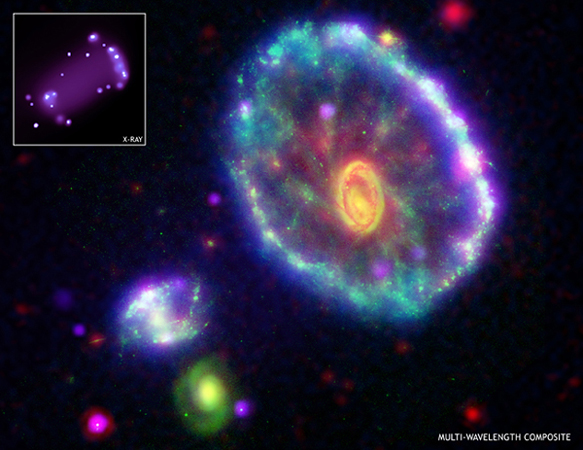Cartwheel Galaxy: A ring galaxy 400 million light years from Earth.
Caption: This image combines data from four different wavelengths of light: infrared (red), visible (green), ultraviolet (blue), and X-ray(purple). The unusual shape of the Cartwheel Galaxy is likely due to a collision with one of the smaller galaxies on the lower left several hundred million years ago. The smaller galaxy produced compression waves in the gas of the Cartwheel as it plunged through it. These compression waves trigger bursts of star formation. The most recent star burst has lit up the Cartwheel's rim, which has a diameter larger than that of the Milky Way Galaxy, with millions of bright young stars. The bright, white X-ray sources on the rim (see inset) are due to matter falling into black holes left behind by the explosion of massive stars.
Scale: Image is 160 arcsec across.
Chandra X-ray Observatory ACIS Image
|


